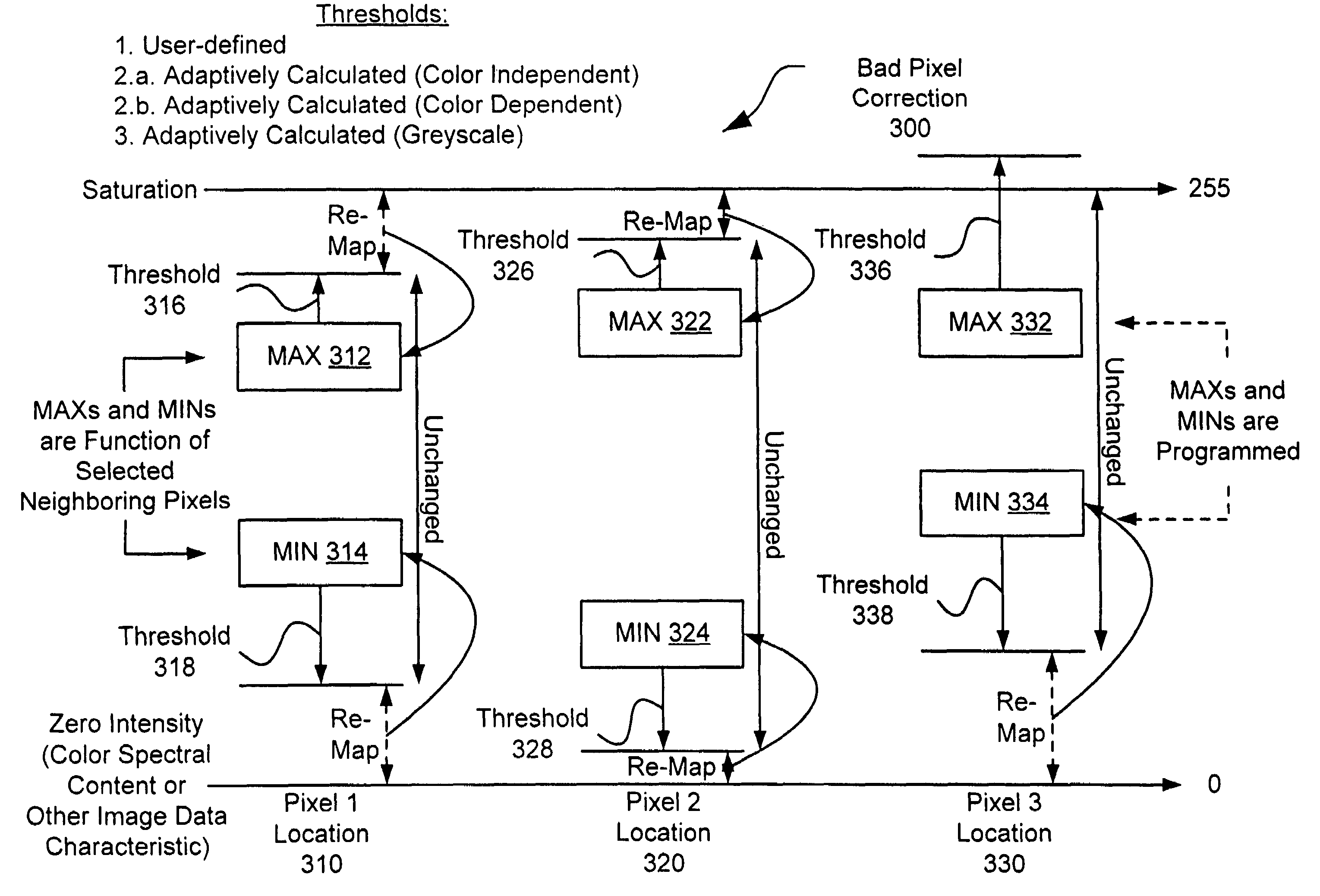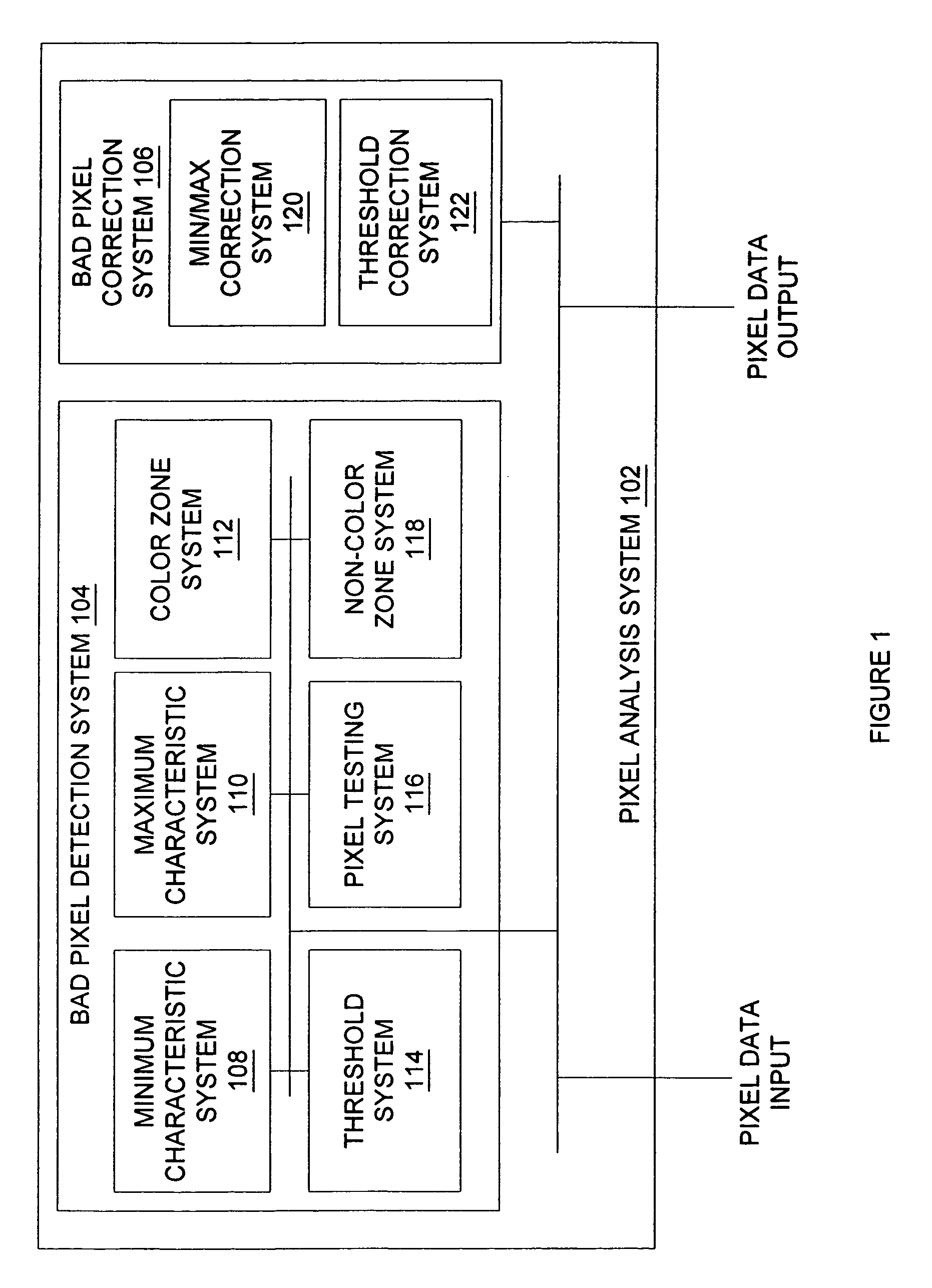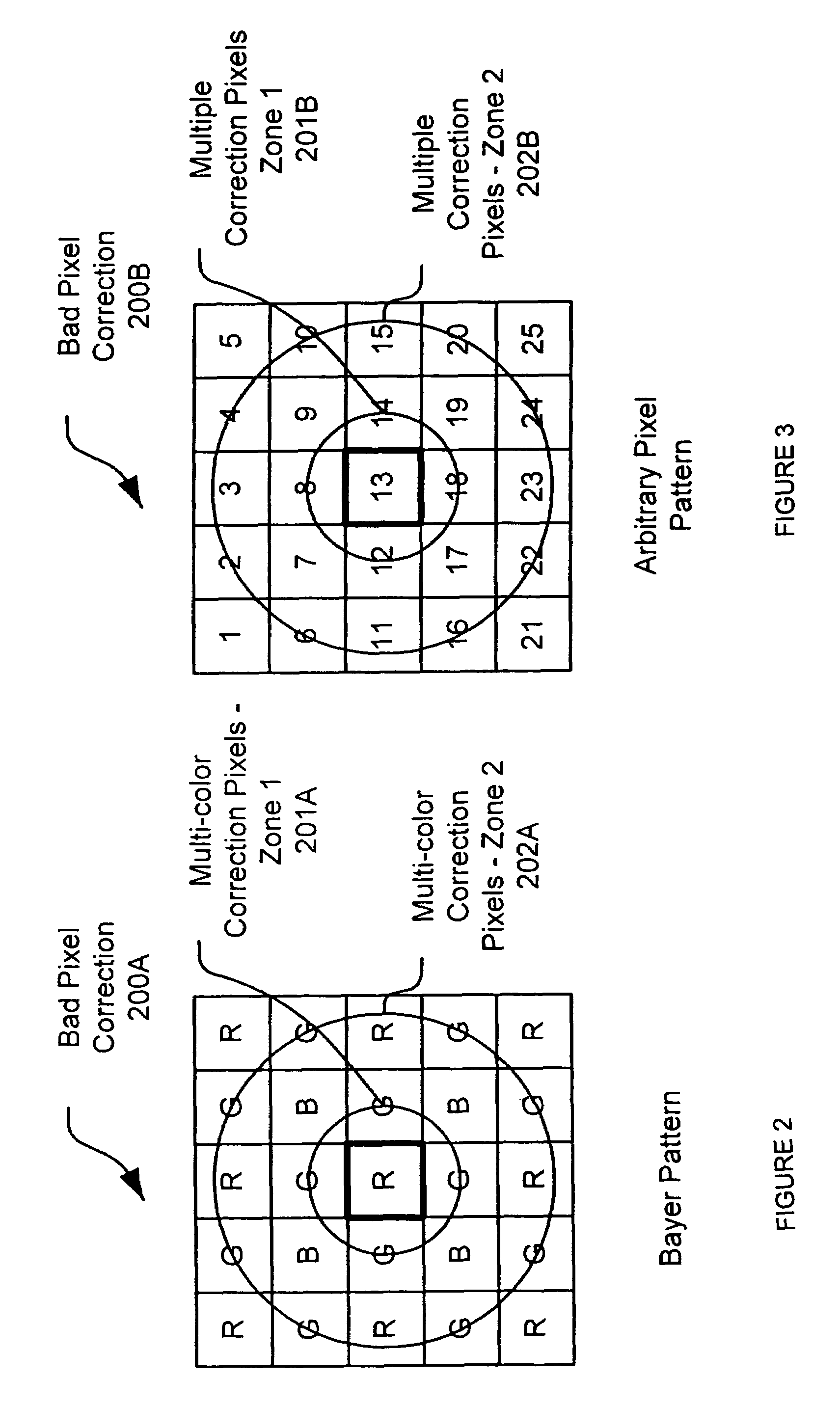Bad pixel correction while preserving features
a technology of features and pixel correction, applied in the field of image processing, can solve problems such as unsatisfactory smooth detail features of images
- Summary
- Abstract
- Description
- Claims
- Application Information
AI Technical Summary
Benefits of technology
Problems solved by technology
Method used
Image
Examples
Embodiment Construction
[0034]FIG. 1 is diagram of a system 100 for detecting and correcting bad pixels in accordance with an exemplary embodiment of the present invention. System 100 can use the characteristic data, such as intensity or brightness, for as few as two pixels adjacent to a test pixel to determine whether the test pixel is a bad pixel, and can also use the characteristic data for one of those adjacent pixels to determine the correction data for the pixel.
[0035]System 100 includes pixel analysis system 102, which can be implemented in hardware, software, or a suitable combination of hardware and software, and which can be one or more hardware systems, or one or more software systems operating on a suitable processing platform. As used herein, a hardware system can be one or more semiconductor devices, an application specific integrated circuit, a field programmable gate array, or other suitable systems or components. A software system can include one or more objects, agents, lines of code, thr...
PUM
 Login to View More
Login to View More Abstract
Description
Claims
Application Information
 Login to View More
Login to View More - R&D
- Intellectual Property
- Life Sciences
- Materials
- Tech Scout
- Unparalleled Data Quality
- Higher Quality Content
- 60% Fewer Hallucinations
Browse by: Latest US Patents, China's latest patents, Technical Efficacy Thesaurus, Application Domain, Technology Topic, Popular Technical Reports.
© 2025 PatSnap. All rights reserved.Legal|Privacy policy|Modern Slavery Act Transparency Statement|Sitemap|About US| Contact US: help@patsnap.com



